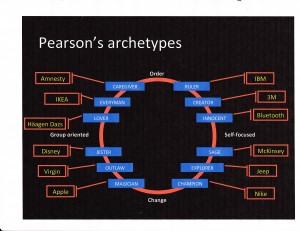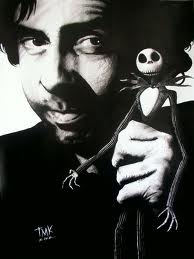A Joke About Your Mind’s Eye
Here’s a cute little joke:
The receptionist at the doctor’s office goes running down the hallway and says, “Doctor, Doctor, there’s an invisible man in the waiting room.” The Doctor considers this information for a moment, pauses, and then says, “Tell him I can’t see him”.
It’s a cute play on a situation we’ve all faced at one time or another. We need to see a doctor but we don’t have an appointment and the doc just has no time to see us. We know how it feels. That’s part of the reason the joke is funny.
Now let’s talk about the movie playing in your head. Whenever we hear or read a story, we create a little movie in our heads to illustrate it. This is one of the reasons I like to read novels — I get to invent the pictures. I “know” what the scene should look like. When I read a line of dialogue, I imagine how the character would “sell” the line. The novel’s descriptions stimulate my internal movie-making machinery. (I often wonder what the interior movies of movie directors look like. Do Tim Burton’s internal movies look like his external movies? Wow.)
We create our internal movies without much thought. They’re good examples of our System 1 at work. The pictures arise based on our experiences and habits. We don’t inspect them for accuracy — that would be a System 2 task. (For more on our two thinking systems, click here). Though we don’t think much about the pictures, we may take action on them. If our pictures are inaccurate, our decisions are likely to be erroneous. Our internal movies could get us in trouble.
Consider the joke … and be honest. In the movie in your head, did you see the receptionist as a woman and the doctor as a man? Now go back and re-read the joke. I was careful not to give any gender clues. If you saw the receptionist as a woman and the doctor as a man (or vice-versa), it’s because of what you believe, not because of what I said. You’re reading into the situation and your interpretation may just be erroneous. Yet again, your System 1 is leading you astray.
What does this have to do with business? I’m convinced that many of our disagreements and misunderstandings in the business world stem from our pictures. Your pictures are different from mine. Diversity in an organization promotes innovation. But it also promotes what we might call “differential picture syndrome”.
So what to do? Simple. Ask people about the pictures in their heads. When you hear the term strategic reorganization, what pictures do you see in your mind’s eye? When you hear team-building exercise, what movie plays in your head? It’s a fairly simple and effective way to understand our conceptual differences and find common definitions for the terms we use. It’s simple. Just go to the movies together.
Branding and Archetypes
 As you develop your company’s brand, how do you determine what “personality” you should project? How do you know where your brand fits relative to other brands in the market? I always recommend that you do as much market research as you can. I also recommend that you study the archetypal systems developed by Carol Pearson (whose website is here).
As you develop your company’s brand, how do you determine what “personality” you should project? How do you know where your brand fits relative to other brands in the market? I always recommend that you do as much market research as you can. I also recommend that you study the archetypal systems developed by Carol Pearson (whose website is here).
Pearson is a Jungian psychologist more than a marketing maven. She has developed a set of archetypes that help people understand how to use their inner resources to enrich their lives. Fortunately for us marketing types, these archetypes can also be applied to companies and organizations. They can help you understand how you fit into a broader ecosystem and how to convey your message most effectively.
When I worked at Lawson Software, we used the simplified diagram that you see here. The diagram includes 12 basic archetypes with a company to illustrate each one.
The circle helps you understand how the archetypes fit together. For instance, note the word “Order” at the top of the circle and the word “Change” at the bottom. Simply put, the companies on the top half of the circle want to maintain the existing order, the current market structure. By comparison, the companies on the bottom half might be described as “upstarts”. They want to change — or overthrow — the current market structure.
The left and right halves of the circle also have much to tell us. The archetypes on the left side are group-oriented. Those on the right side are more self-focused. The simplest explanation is that those companies on the left of the circle focus primarily on their external constituencies. Those on the right focus more attention on internal processes and procedures.
At Lawson, we quickly decided that we were on the bottom half of the circle. We weren’t the market leaders, we didn’t dominate the segment — we needed to shake things up to find our place in the sun. Similarly, we decided that we were on the left side of the circle. We were market oriented and our mission was to make our customers stronger. In other words, we were externally focused.
So, we were on the lower left segment of the circle. We had three archetypes to choose from: 1) Jester, like Disney; 2) Outlaw, like Virgin; 3) Magician, like Apple. We then proceeded by elimination. We were a B2B company and just didn’t have the magical chops of Apple. Similarly, we weren’t a jester like Disney. Indeed, we were probably too serious.
That left us at “Outlaw”. We never really liked that label but ultimately we decided that’s who we were. (We described ourselves as “disrupters” rather than as “outlaws” but, really, what’s the difference?) To succeed, we needed to break some rules. We needed to be different and shake things up. It helped that we had a plain-spoken and charismatic CEO who was not unlike Richard Branson.
Choosing the outlaw/disrupter path almost immediately led us to use a cartoon character — very different than what you would expect from, say Oracle or SAP. With help from Fiftyeight, a very creative agency in Germany, we developed the Lars Lawson character as well as Sepp (for SAP) and ElCaro (Oracle spelled backwards). We then launched a series of video adventures on YouTube that typically garnered over a million views. (You can see the most popular videos here and here).
Did it work? You betcha. We grew faster than our segment and gained visibility globally. Bottom line: whether you’re a person or a company, it helps to know who you are and where you fit.
You can find Carol Pearson’s books here.
Democracies Surface Conflict
 Roger Fisher died a few weeks ago. I wonder what he would have thought of today’s election.
Roger Fisher died a few weeks ago. I wonder what he would have thought of today’s election.
Fisher wrote (with varying co-authors) Getting to Yes which pioneered the concepts of principled negotiation. The idea is simple: negotiations should lead to collaboration and compromise. Both sides should have a stake in the solution. One side shouldn’t have to “give in”. It shouldn’t be winner take all.
Fisher also pointed out that democracies surface dissension and conflict. In the introduction to the 3rd edition, Fisher argues, “Democracies surface rather than suppress conflict, which is why democracies often seem so quarrelsome and turbulent when compared with more authoritarian regimes. … The goal cannot and should not be to eliminate conflict. Conflict is an inevitable — and useful — part of life. It often leads to change and generates insight. … And it lies at the heart of the democratic process, where the best decisions result not from superficial consensus but from exploring different points of view and searching for creative solutions. Strange as it may seem, the world needs more conflict not less.”
We have a lot of dissension in America today. That doesn’t bother me. We should disagree. What disheartened me about the recent campaigns were the attempts to invalidate each other: “If you don’t agree with me, you’re not a real American.” “The Founding Fathers said X. If you don’t agree with my interpretation of what they said, you’re unAmerican.”
To me, statements like these are truly unAmerican. People who call others unAmerican are not trying to reason with the opposition or even to argue a point. They’re trying to suppress or eliminate the opposition. The argument goes like this, “If you’re not a real American, you have no standing. We don’t need to consider your views. You don’t count. We’ll do what we want. You’re nobody.” It’s insulting and demeaning to invalidate a fellow American. The American Dream says we all count.
The Founding Fathers said a lot of different things but what they created is a system that requires collaboration and compromise. The system of checks and balances actually works, except in the face of intransigence. As numerous historians have pointed out, the genius of the American system is our ability to compromise.
I’m not particularly loyal to either political party but I am loyal to the process. I like to argue because I think it’s the best way to reach agreement. I’m worried that we’re losing not just the ability to compromise but also the desire. That would be a tragedy. So, no matter who wins today, I hope we can spend less time invalidating each other and more time getting to yes.
(You can find Roger Fisher’s obituary here. You can find Getting to Yes here.)
Are older people wiser?
Many cultures around the world consider old people to be wiser than young people. Why would that be? It may be very simple — old people have forgotten a lot. They forget the details and the minutiae. They remember the important stuff. That’s also very good advice for creating powerful, persuasive presentations.
Get more tips for improving your verbal communication skills in the video.
The Persuasive Future
Want to win an argument? The Greeks — who invented the science of persuasion — said you could only really win an argument in the future tense. The present tense and past tense are useful Continue reading
